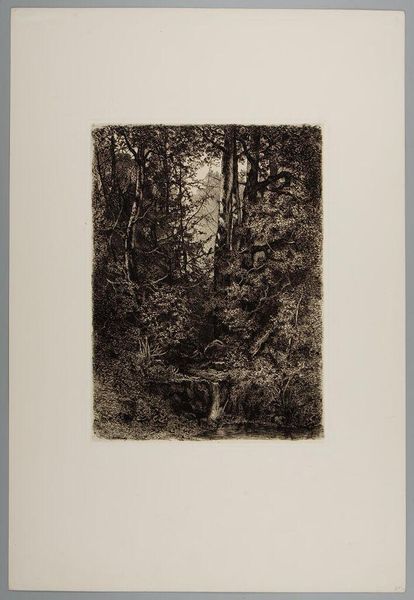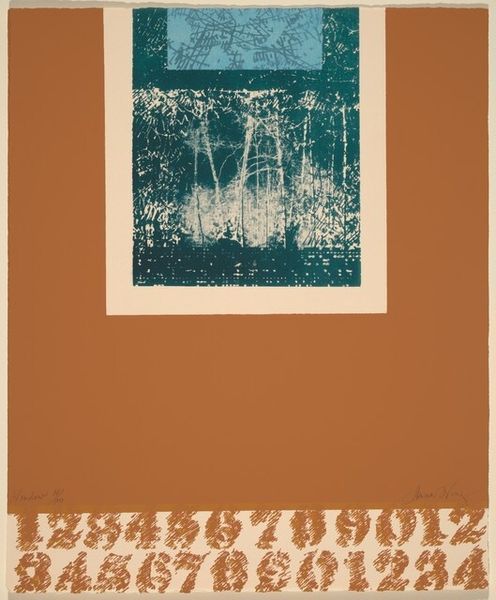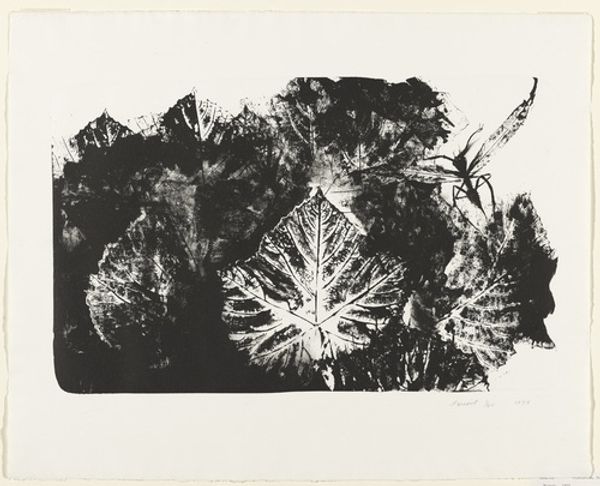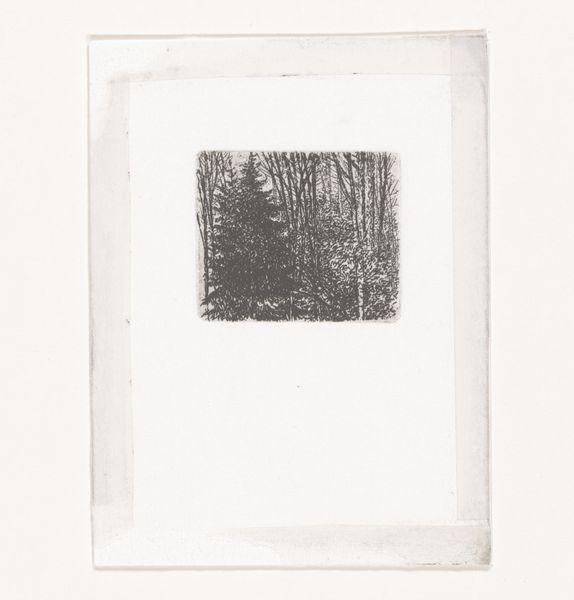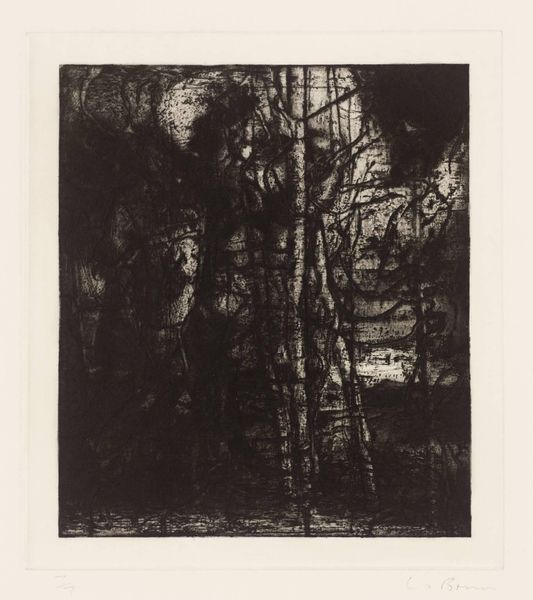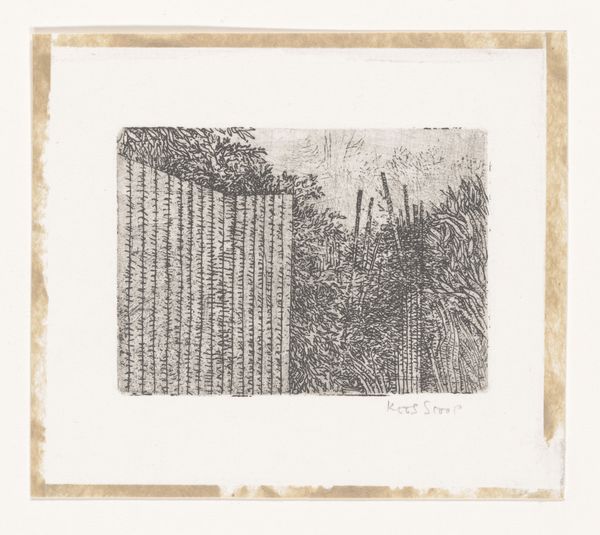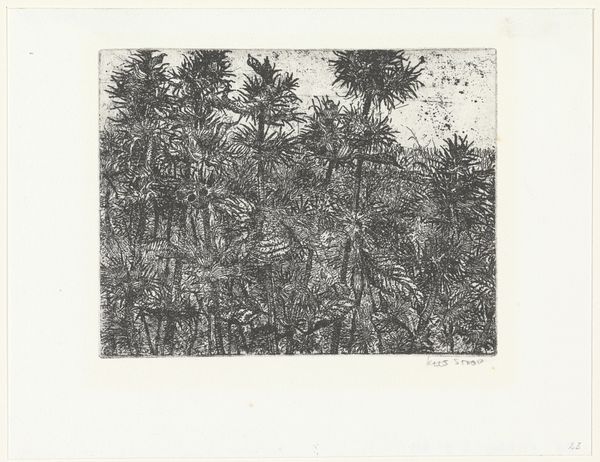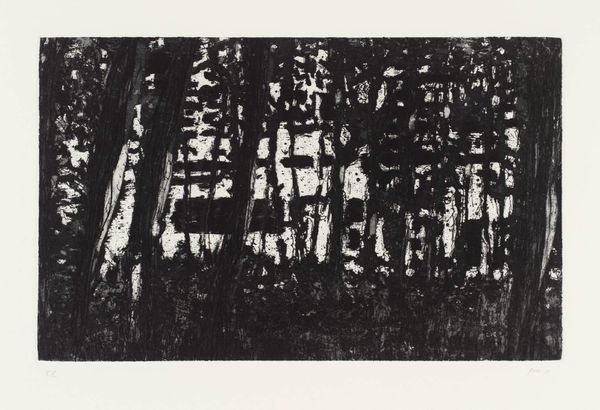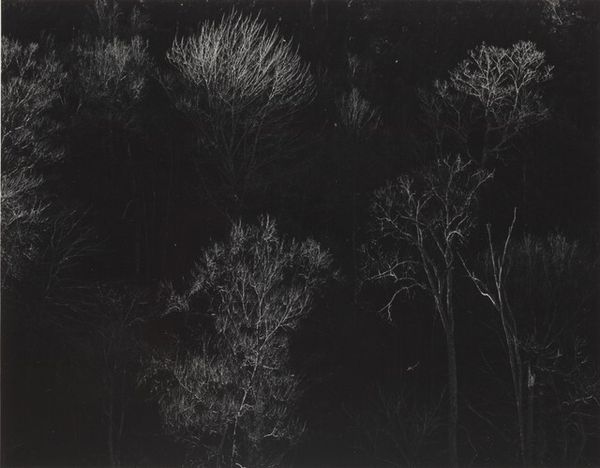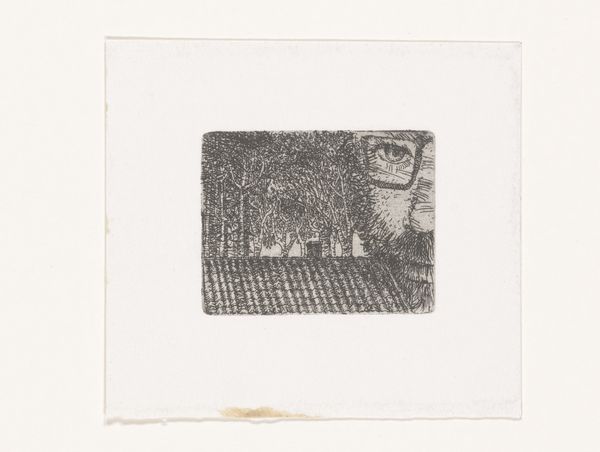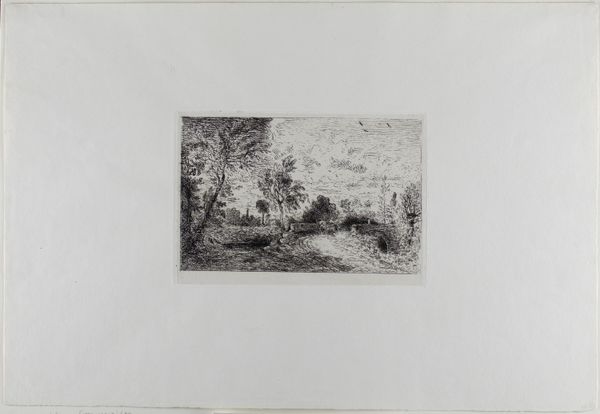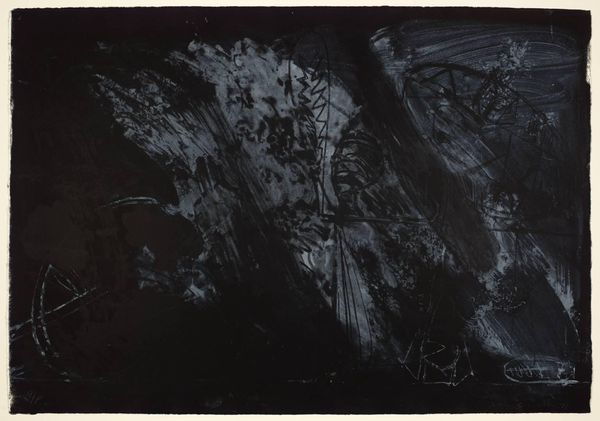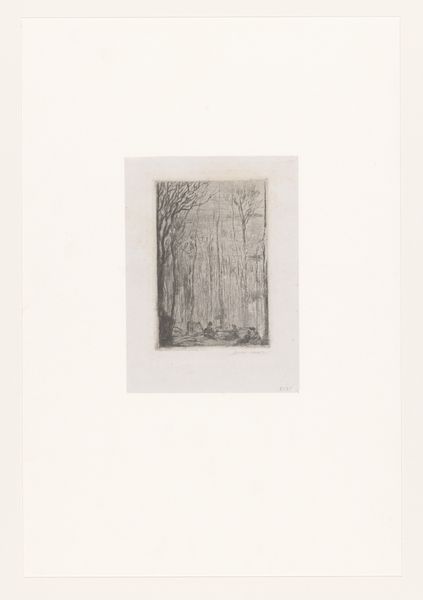
contact-print, photography
#
photo of handprinted image
#
landscape
#
contact-print
#
street-photography
#
photography
#
modernism
#
monochrome
Dimensions: image: 30.16 × 50.17 cm (11 7/8 × 19 3/4 in.) sheet: 54.2 × 66.36 cm (21 5/16 × 26 1/8 in.)
Copyright: National Gallery of Art: CC0 1.0
Curator: What a strikingly eerie, dreamlike image! A dense forest of palms… It’s almost unsettling in its uniformity. Editor: And that striking border, so clearly a hand-printed image... We're looking at Dick Arentz's "Indian Wells, California," created in 1985 using a contact print. Curator: A hand-printed image in 1985! It's fascinating how he’s deliberately emphasized the physicality of the photographic process, rejecting the pristine, mass-produced image for something rawer and almost primitive. The rough edges add a powerful graphic element to an otherwise classically composed subject, a visual representation of paradise that comes with a visual warning. Editor: Absolutely. The contrast is so sharp. We should consider how this piece fits into the socio-political landscape of 1980s California. Was this a commentary on the manufactured landscapes of leisure and luxury springing up in the desert? Palm trees become signifiers here, indicators of wealth and artificial environments. Curator: Possibly. Or perhaps, more simply, it delves into how humanity reshapes nature to mirror our own desires and preconceptions. I think of the palm tree as a long-standing symbol. Think back through antiquity –the palm as a symbol of triumph, victory, and eternal life –a message from the divine. This photograph seems to interrogate that ancient symbolism by rendering the trees into these identical rows in an attempt to achieve visual paradise. Editor: I agree that his image resonates through visual manipulation and re-framing that has consequences within the socio-cultural norms, yet he uses a very individual and direct form, almost an un-edited picture in picture framing! Curator: Precisely. The photograph holds onto its cultural memories even as it tries to represent modernity. Its monotone quality removes distractions and sharpens this feeling. Editor: I’m curious what Arentz would say about these observations now… Still, an intriguing statement about art, artifice, and place. Curator: Indeed. The symbols continue to evolve! It leaves us to ponder how we're reshaping our surroundings to echo our dreams.
Comments
No comments
Be the first to comment and join the conversation on the ultimate creative platform.
